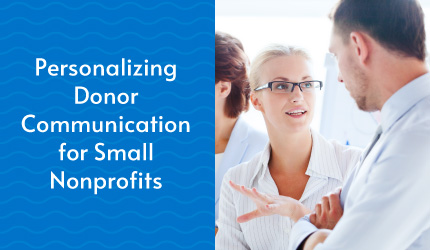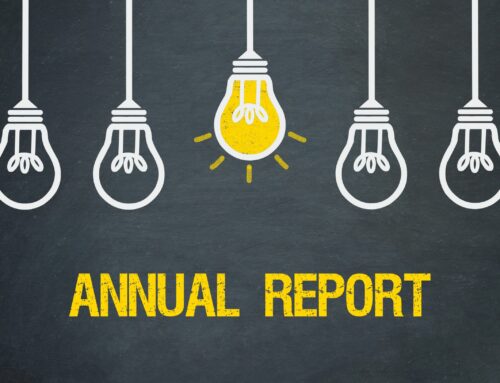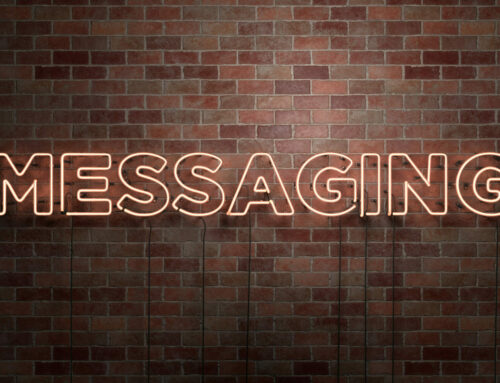 The generosity of donors is crucial to your nonprofit organization’s success, which means that you should strategically plan your communications with them. Part of creating great donor communications is personalizing each message to its recipient, making them more engaging.
The generosity of donors is crucial to your nonprofit organization’s success, which means that you should strategically plan your communications with them. Part of creating great donor communications is personalizing each message to its recipient, making them more engaging.
This article will cover the following strategies for donor communications for small nonprofits:
- Tailor communications to donor preferences.
- Address donors by their preferred names and pronouns.
- Reference past giving history.
- Follow-up after specific activities.
- Implement donor segmentation.
As a small nonprofit, you have limited resources to connect with donors but adding a few personal touches to messages is a low-cost and easy way to strengthen your supporter relationships. By personalizing communications, you show supporters that you genuinely care about them, which can lead to more donations to help further your mission.
Let’s dive into five strategies you can use to personalize donor communications!
1. Consider your communication channels.
Part of personalizing donor communications is tailoring them to each donor’s preferences. Consider which types of communications result in higher engagement and which channels these communications take place through.
Ask your donors which channels they would prefer your nonprofit use to reach out to them. Here are the most common communication channels nonprofits use and what types of messages they work best for:
- Direct mail. Direct mail is best suited for older donors who may be less technologically savvy. Some younger donors may also appreciate the effort behind a handwritten thank-you letter.
- Phone call. For some donors, nothing replaces the connection of speaking to another person, which makes a phone call a great way to communicate with them.
- Email. As a classic donor message format, emails are useful for communicating with donors of all ages.
- eCard. Set your messages apart from other nonprofits by getting creative with charity eCards. eCards are a cost-effective communication format that can be especially helpful for small nonprofits looking to capture the magic of handwritten cards without paying mailing costs.
- Text. Best suited for quick and short donor communications, text messages appeal to young and busy donors who appreciate quick reminders about what your nonprofit is up to, such as information about an upcoming fundraising event.
- Social media. Platforms such as Instagram provide convenient messaging channels for nonprofits seeking to engage with a younger audience.
Aside from format, you can also tailor communications to other donor preferences, such as frequency. Some donors are happy to hear from your nonprofit multiple times a week, whereas other donors prefer to receive communications once a month. Resist the temptation to message your donors as often as possible—donors are more likely to continue supporting your nonprofit if they feel that their preferences are being taken into consideration.
2. Address donors by their preferred names and pronouns.
When donors sign up to receive communications from your nonprofit, be sure to include a field on your form asking them what their preferred name is. Many donors will provide their legal first name, but some donors prefer to go by a nickname. Others may want to be addressed by their full name, while others have titles, such as “Dr.”
Additionally, ask your donors for their preferred pronouns. This shows your donors that you care about them and value creating an inclusive space for donors of all identities. Allow donors to specify a gender-based title, such as “Mr.” or “Ms.” and add a gender-neutral option such as “Mx.”
3. Reference past giving history.
Past giving history can provide insight into a donor’s motivation behind giving. Ask yourself the following questions about your donors’ giving histories:
- What amount did the donor give? After a donor makes a gift, regardless of its size, send them a thank-you message. A larger gift may warrant more detailed messages, or even multiple communications, such as a personalized email and a phone call.
- How frequently does the donor give? Recurring donors are often more invested in your nonprofit’s mission than one-time supporters. This means that they may appreciate more frequent and detailed communications.
- What other nonprofits or causes does the donor give to? If you have access to this information, it can tell you about a particular donor’s giving habits. For example, if a donor only gives to nonprofits dedicated to finding a cure for cancer, then you know that’s something they’re personally invested in.
Use the information you glean from these questions to create more personalized and targeted messages that donors will be more receptive to. If a donor has demonstrated an investment in your nonprofit, don’t be afraid to invite them to engage with your nonprofit in ways other than donating.
4. Follow-up after specific activities.
When donors perform certain activities that help support your nonprofit, send follow-up communications to them. This tells them that you see and appreciate what they’ve done for your nonprofit. Follow up after a donor performs these activities:
- Makes a donation. Donors expect some form of acknowledgment for their gifts, and you can easily fulfill this wish by sending an email or eCard expressing your heartfelt thanks.
- Volunteers for your nonprofit. Fundraising Letters’ guide to volunteer appreciation recommends sending letters to thank supporters for volunteering for your nonprofit to show your gratitude for their support.
- Attends an event. After a donor attends a fundraising event, send them an email thanking them for their participation. You might also include a survey so that they can inform you what they enjoyed about the event, and what could be improved. Implement this feedback to show your donors that you value their input and are dedicated to creating positive experiences for them.
By sending these messages, you recognize all your donors do for your nonprofit. According to eCardWidget’s donor recognition strategies, this makes donors feel valued, keeps your nonprofit top-of-mind, and increases donor retention rates.
5. Implement donor segmentation.
This last donor communication strategy is a combination of all of the previous ideas. When you segment your donors, you separate them into groups based on common characteristics or preferences. This helps to streamline the process of creating communications, as you can create different messages for each donor segment.
Segment donors based on characteristics that will be relevant to your messaging strategy. For example, you can segment donors based on:
- Age
- Location
- Previous donation amounts
- Nonprofit involvement
- Communication frequency preferences
To create your donor segments, you’ll need a nonprofit customer relationship management (CRM) system. These systems allow you to efficiently store and manage your donor data to help you sort donors into their segments. Doing so will result in more targeted communications that donors are more likely to engage with. Nonprofit CRMs also include other features that can help your donor communication strategy, such as email builders and automatic messaging tools.
The Bottom Line
Nonprofits rely on the goodwill of their donors, which is why it’s important to communicate regularly with them. For nonprofits hoping to increase their donor retention rate, personalizing donor communications to build valuable connections that will likely lead to future gifts.
About the Author
Tim Badolato is the CEO of eCardWidget.com an innovative platform for digital employee recognition, donor acknowledgement, business marketing, and nonprofit marketing. He has a passion for using technology to drive positive outcomes for mission-driven businesses and nonprofits.






